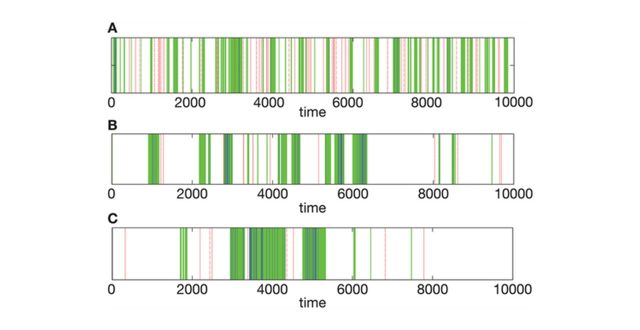This paper investigates the evolution of cooperation and the emergence of hierarchical leadership structure in random regular graphs. It is found that there exist different learning patterns between cooperators and defectors, and cooperators are able to attract more followers and hence more likely to become leaders. Hence, the heterogeneous distributions of reputation and leadership can emerge from homogeneous random graphs. The important directed game-learning skeleton is then studied, revealing some important structural properties, such as the heavy-tailed degree distribution and the positive in-in degree correlation.
Cooperation and hierarchy are two hallmarks of human organizations, but neither of them is trivial to analyze. Game theory has for decades sought to explain why egoistic individuals cooperate even though they, in a short time perspective, would be better-off not to. Here, this question is revisited to investigate how cooperators also form hierarchies rather than being all collaborating peers. By studying the learning patterns among the agents playing repeated Prisoner’s Dilemma (PD) game in a random regular graph, it is found that the longer the individual holds on the cooperative strategy, the more followers the individual has, and the easier the leader diffuses its behavioral inference. By mapping the way they influence one another onto a weighted network, the learning skeleton produces hubs and a broad distribution of in-degrees of the agents, defining a robust hierarchical leadership structure. It demonstrates that the presence of positive correlation between the cooperation-persistence duration and the potentiality of being leaders further stabilizes the emergent hierarchical structure.

